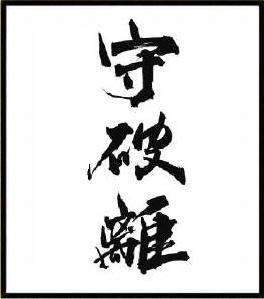How can we train for the friction and chaos of battle when following a set fitness routine?
Physical preparation for combat readiness must be, by its very nature, a multifaceted approach. If the combatants have to be ready for anything, shouldn’t their fitness regimen reflect that? Surely the idea of training random workouts each and every day must help better prepare the person to face any challenge, right?
Well, yes and no.
As with all things, fitness is a skill. The body must be adequately prepared at a baseline level through rigorous training AND practice to establish a solid foundation of GPP. To suddenly subject a trainee to an onslaught of arbitrarily selected workouts is only a recipe for creating a shallow level of skill in a bunch of random areas. It is also a great way to cause injury rather than seek to prevent it. Random training produces random, haphazard results.
The Warrior Fitness Training methodology follows the Shu-Ha-Ri model of teaching prevalent in schools of traditional Japanese martial arts. Shu-Ha-Ri translates to “protect the form, break the form, leave the form behind”.
Usually within schools of traditional Japanese Budo this is a linear model where at the beginning of training the student is taught to carefully protect the form without deviation so as to template themselves to the teacher and to the martial system. After becoming proficient in the exact techniques of the school the student is then encouraged to begin breaking the form. And then slowly, very, very slowly, after decades of practice the student finally begins to transcend the form and leave it behind thus moving at the level of principle.
The Shu-Ha-Ri model is slightly different in the Bujinkan tradition that I study. Rather than a strict linear progression, the model is not quite as fixed. It may be Shu-Ha-Ri, Ri-Ha-Shu, Ha-Shu-Ri, or any combination of the three. In this way, the student does not have to wait until he has trained for decades to learn how to break the form, nor does he always leave the form behind. Instead the training progresses in an upward spiral where the teacher may start with the basics, circle up to breaking the form, and finally leave the form behind, followed by working again on the basics. The same material is always looked at with fresh, new perspective and greater depth each time it is taught no matter where in the cycle it falls. This allows for better all-around development and faster progression while still inculcating the basic forms and instilling a respect for technique. It also gives the student the freedom to adapt to the friction and chaos of combat by learning how to both break and throw away the form when required yet still conforming to the strategic and tactical principles of the art.
How Does This Relate to Fitness?
What I have done is take the Shu-Ha-Ri model as taught within the Bujikan martial arts tradition and apply it to the programming in my Warrior Fitness Training System. This means that within a complete training program, the student will undergo GPP (general physical preparation), SPP (specific physical preparation), TS (technical skills), and MT (mental/emotional toughness) to fully and completely prepare them for the task, goal, or mission at hand (For a more detailed description of each, please see my post on The 4 Levels of Preparation).
Following the Bujinkan model then, the progression of training may not necessarily be a straight line. Depending on the level of the student, GPP will most likely form the bulk of the training but it will be cycled out of and back into throughout the duration of the program. As the student progresses and increases in the skill of fitness, their training becomes blended at a higher level of SPP maybe only cycling back into GPP to shore up certain weaknesses and then coming right back out again. This insures that the student is constantly progressing and also constantly prepared without having to resort to a random workout generator model of training.







Leave A Response